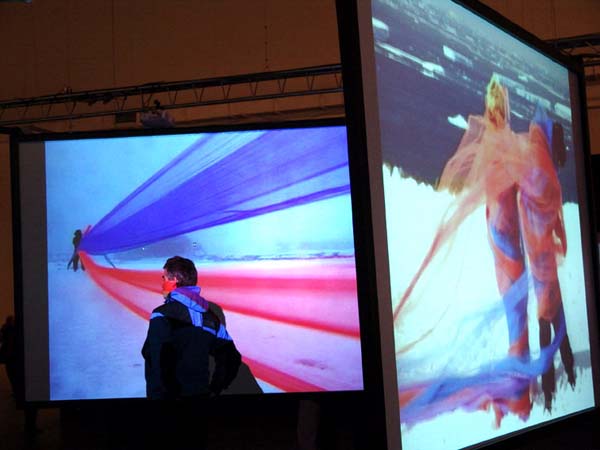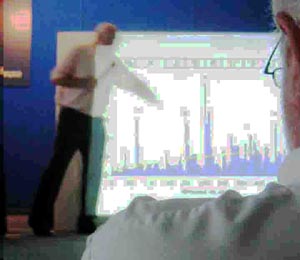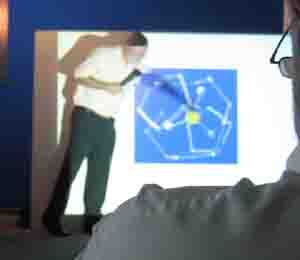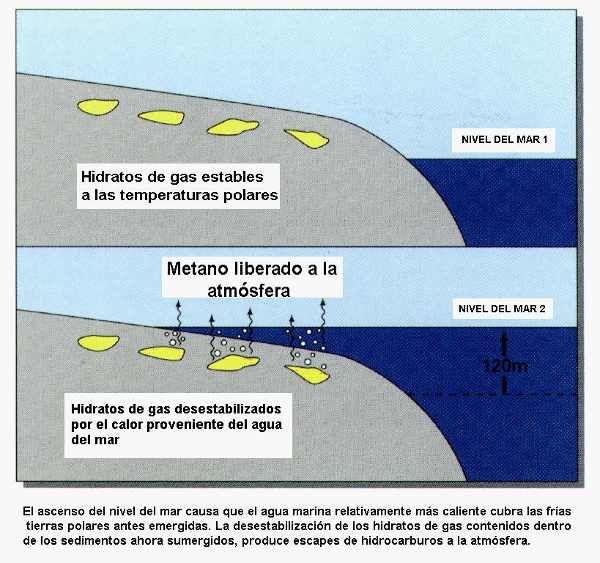Antarctic Thesaurus
a
b
c
d
e
f
g
h
i
j
k
l
![]() n
o
p
q
r
s
t
u
v
w
x
y
z
n
o
p
q
r
s
t
u
v
w
x
y
z
map Mawson McMurdo measure melt stream methane mood
methane

Andrea Juan Methane Primera Bienal del Fin del Mundo, Ushuaia, 2007
Different performances which are part of METANO [methane] were carried out on the snowed plateau of Marambio. Fog, inaccessibility, the lonliness of that frozen geography slowly invaded by the fluoescent emanations of toxic gasses which desperately flow into its surface. The unexpected, even to the last breath; an effort on man's side to result uninjured in those struggles.
Andrea Juan Buenos Aires 2005
Gestures made in response to Antarctica are ways to connect with its changes.
Artistic engagements with Antarctica through various media, methods and metaphors, reveal changes witnessed, experienced and understood there. Scientists tell of a landscape on the move. Hearing their words, artists bring to life their new understandings in the context of their own arts practice and experience.
Argentinian artist Andrea Juan went to Antarctica in the summer of 2005. On her way there she listened to voices of scientists explaining the landscape changes. Media she took to work with included enormous swathes of rainbow coloured tulle, cameras, data projectors, video footage of Argentinian sunflowers, and her own body. Methods she employed to engage these in the landscape included dancing with tulle through wind, drawing it over rock, and projecting moving images of colourful sunflowers onto ice. (Sur Polar, 2008).
Physically drawing colours into the predominantly white space, through human movement and video projection, animates connections between known and unknown landscapes. Metaphors embodied in her materials and methods include tension between the heat of teeming life and cold white death, and the toxic intrusions of humans in a pristine environment. Sunflowers burning in fire represent our burning of fossil fuels which changes all our landscapes through "loss of matter."
The flower centers filled up with seeds intensify the dramatic effect of rapidly passing images which transform their destiny until they burn out in the flames of a fire which, beyond the fascination it rouses in the recipient, acts as a warning. The layers of transparent material on which the video is shown in the hall [Videoinstallation Contemporaneo 13, Museo de Arte Latinoamericano de Buenos Aires (MALBA), 2005] further the idea of the loss of matter and thus the fate of the art is equaled to that of Antarctica.
Corinne Sacca Abadi The Tragic Beauty of a Changing Horizon, Catalogue, Andrea Juan: proyecto antartida Pub. Direcciion Nacional del Antartico, El Fondo Nacional de las Artes, El Programa Antartico Argentino, John Simon Guggenheim Memorial Foundation, New York, 2005, p. 85


Dr Rodolfo del Valle, Head of Earth Sciences, National Antarctic Direction, Argentina, speaking at the Sur Polar conference, Buenos Aires, March 2008

The Polar regions are thought to contain, in terms of methane hydrates, more than half of the total carbon in the entire planet - that is twice the biomass, the coal and fossil hydrocarbons (petrol, natural gas) together.
We are dealing with natural leaks of methane which we have spotted at the sea bottom in the NW region of the Weddell Sea. We are also monitoring the condition of marine sea ice in the same region. We have followed the formation process of the layer of frozen sea and its recess during August, September and October - which are the most significant months for the stretching of marine ice. Usually in Antarctica marine ice grows and stretches in those months until it reaches some 10 million square kilometers. In that period of maximum ice stretching we have observed its recess, that is to say, a reduction, a significant disintegration. This fact, added to the recess of the glaciers that we have measured to the extreme north of the Antarctic Peninsular shows us that the climate warming is having a strong impact in the region where we had thought to use the frozen sea ice as an "ice highway" for our shifting towards the zone of Isla Marimbio (Seymore Island). We were studying there the natural gas leaks from the sea bottom. We intended to reach the area we had detected with snow motorcycles, through the satellite navigation system GPS, the methane leaks...
The natural methan gas (CH4) leaks are a product of the rise of the sea level - something that took place due to climate warming - the one which produced the main thawing in the Antarctic after the last glaciation. This defrosting caused the sea level to rise some 100/120 meters, and this flooded some Antarctic areas which were precviously exposed to the atmosphere's severe cold during the glaciation. During the glacial perios, the deep freezing of the soil in those coastal strips exposed to low temperatures trapped methane coming from bacterial activity in the substratum thus producing a substance known as clathrate or methane hydrate - a composite of frozen ice moleucles (ice) which contains methan molecules in its crystalline network. The Polar regions are thought to contain, in terms of methane hydrates, more than half of the total carbon in the entire planet - that is twice the biomass, the coal and fossil hydrocarbons (petrol, natural gas) together...
We are additively interfering in the natural oscillation of the cycle of carbon; there's anthropic evidence, one produced by man; an interference which is positive, additive, and adds to the rise-fall oscillation. Through the increase of the greenhouse gas effect gases, we are causing the temperature to rise too much and just in the middle of a rising cycle - this might break the cycle. I believe this additive interference is already dangerous. Nature might be unable to restore the balance.
For this process we could make an analogy with the father who swings his child in a park hammock. He swings the kid cyclically, with a certain rhythm, not at random - otherwise, the hammock would twist, the child would fall...and the game would be over. I believe there's more and more evidence that we are "twisting the chain of the hammock".
Extracts from Additively interfering in the Natural Oscillation: Interview between Rudolfo del Valle and Andrea Juan on board the icebreaker ARA Almirante Irizar during the summer Antarctic campaign, February 2005. Catalogue, Andrew Juan: antarctic project, Buenos Aires 2006








